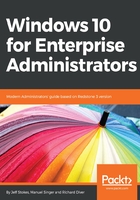
Current Branch, also known as Semi-Annual Channel (Targeted)
Beginning with Windows 10 and its new Windows as a service concept, you can choose between two main flavors. All Windows 10 Home, S, Professional, Pro for Workstation, Enterprise, and Education SKUs support the Current Branch (CB) model. This branch was renamed with Windows 10 1709 to Semi-Annual Channel (Targeted). When Microsoft officially releases a new feature update for Windows 10, that update is marked as CB / Semi-Annual Channel (Targeted).
In this CB model, the system will be updated up to three times a year (don't worry, the Windows 10 product group stated that they normally plan only one to two releases per year). As soon as this CB is available, it will be rolled out to all Windows 10 installations, which will be getting their updates directly from Windows Update (WU) online. The roll out will be done in stacked waves.
If you want to postpone such a roll out, you need to defer feature updates, which is an option only available in Pro, Pro for Workstation, Enterprise, and Education. You can defer updates per GPO when using WU for 1-8 months, or directly inside your Windows Server Update Service (WSUS), System Center Configuration Manager (SCCM), or third-party deployment solution for a even longer time frame.
To distinguish between the different branches, a lot of people use the build numbers. But it is cumbersome to memorize all these builds: 10240, 10586, 14393, and so on. You should use this naming only when speaking of Windows Insider builds.
Also, the code names are not that clear and do not describe at what time a version was released (for example, Threshold 1/2, Redstone 1/2/3, and so on). With the Windows 10 release in 2016, they also introduced public code names such as Anniversary Update or Creators Update. But this is more or less only a way for marketing to describe a future version without already stating the exact release date, which is possibly not fixed at the time of announcing the new version.